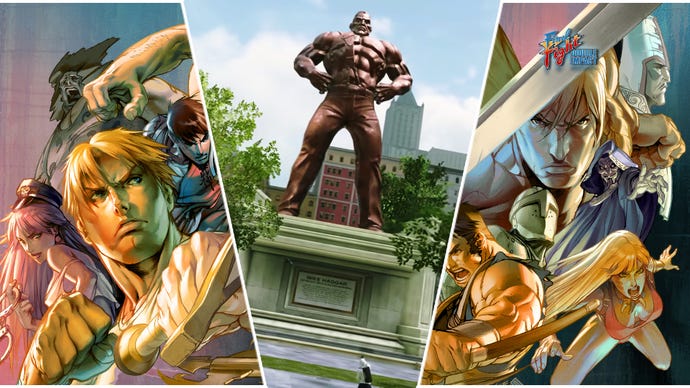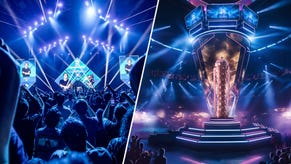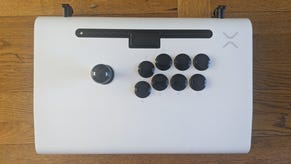World Tour isn’t just Street Fighter 6’s Story Mode – it’s also Final Fight 4
World Tour is Street Fighter 6’s story mode, sort-of a revival of another classic Capcom series, and a loving tribute to several more.
Street Fighter 6’s new World Tour story mode is a revelation for the series. Less a ‘cinematic story’ and more more an RPG experience that allows you adventure through an open-ended Street Fighter theme park, it’s a wonderful mode that pays loving homage to years of gaming history. But its secret weapon is that it isn’t just a Street Fighter experience at all.
Really, World Tour owes as much to Final Fight as to Street Fighter.
These two franchises have always been inextricably linked, and have always shared a universe. The first Final Fight actually began development as a sequel to the first Street Fighter, swapping one-on-one battles for street brawls against a seemingly endless cavalcade of baddies. Eventually it morphed into a bruising new series, sitting alongside likes of Golden Axe, Streets of Rage, and a string of licensed games – the most famous of which star the Teenage Mutant Ninja Turtles.
Despite the differing genres, the connection between Final Fight and Street Fighter endured. Final Fight characters would cameo in the background of stages in Fighter, Metro City would be a frequent SF locale, and eventually, Final Fight characters fully crossed over to be playable in the one-on-one series. So the link isn’t new; but Street Fighter 6 certainly deepens it.
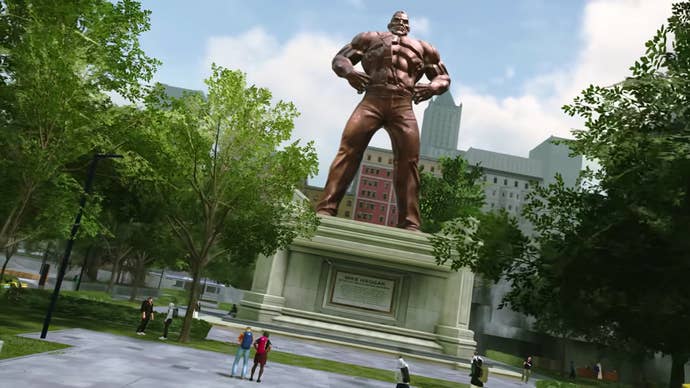
Around half of World Tour takes place in an open-world representation of a few city blocks of Metro City, the setting of the Final Fight games. Mad Gear, the criminal gang at the center of those games, plays a role as both antagonist and ally. And plenty of Final Fight alumni make appearances throughout, heading up side quests, as major story beats, or just appearing for the hell of it.
These are some of the greatest moments of SF6’s World Tour, in fact. Every character you fight in World Tour has a fighting style based on one of the other 18 warriors available to play in SF6’s other modes – but the parameters of each fighter are altered by their size, shape, stats, and which special moves they have access to, which can be mixed and matched from those of the whole cast. Furthermore, some characters have unique moves – designed to give them a truly individual flair.
In a deep cut for hardcore fans, Street Fighter 1’s Retsu shows up, for instance. Retsu knows he’s a deep cut; he tells the player to Google him. He heads up a major side quest, but is essentially built like a user-created character – except the developers have given him one unique special move. That move is a flying kick he also performed back in the original Street Fighter. And so, when you fight him, it really feels like Retsu is back. The same is true for a variety of returning minor characters from both Street Fighter and Final Fight, and you’ll see some pretty rad unique moves from grapples to samurai sword slashes – it’s cool.
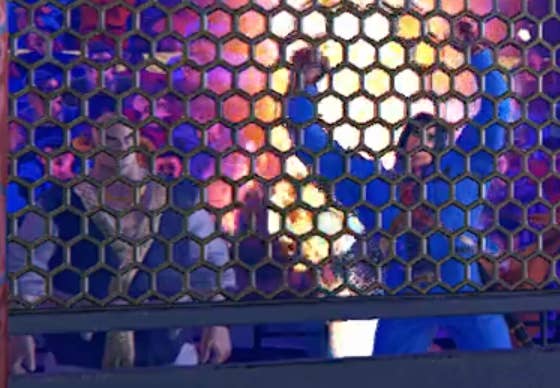
It’s not just about character and world, though – World Tour also feels mechanically connected to Final Fight, at least on a spiritual level. Those sorts of games died out as games became more expansive and complex. Just battering people in the street was no longer substantive enough. The lineage of those games led to other stripes of action/adventure/RPG games, though; it’s easy to draw a connecting line between Streets of Rage, to Shenmue, to Yakuza. Such is the case for World Tour and Final Fight.
The way you’re trundling around this world getting into scraps, inserting yourself into gang wars, and unraveling the mysteries of Metro City in a quite camp, non-serious manner – it feels like a modern successor to those beat-’em-ups.
It’s impressive, too, that this is accomplished without invoking most of Final Fight’s biggest stars. Mike Haggar (who shares several moves with SF’s Zangief) is immortalized in a statue but otherwise does not appear, and nor do Abigail, Cody, Guy, Lucia, Maki, or Sodom. Hugo and Poison have some of their Final Fight peers show up as super-bosses of a sort – but they, too, are absent. Given these characters have all been playable in other SF titles, though, it seems a fair bet the developers wanted to hold them back... just in case they join the roster proper at a later date.
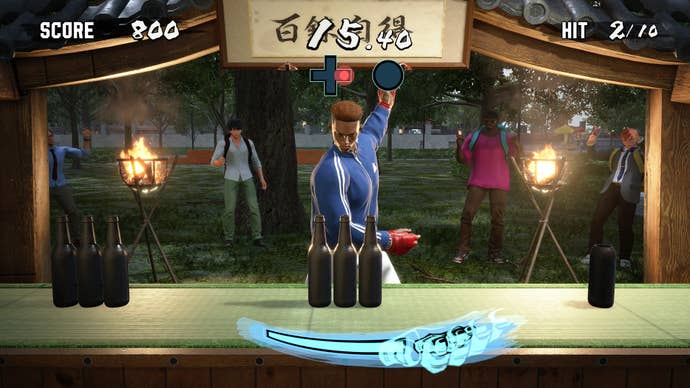
Anyway. All this is to say, it’s rather wonderful. As I say in our SF6 review, World Tour is a little bit ropey and threadbare in places - but what it lacks in polish it makes up for in charm and heart. It’s a canny idea of what a Street Fighter single-player can be – but also a successor to Final Fight. In fact, it’s a love letter to all of Capcom’s brawling titles.
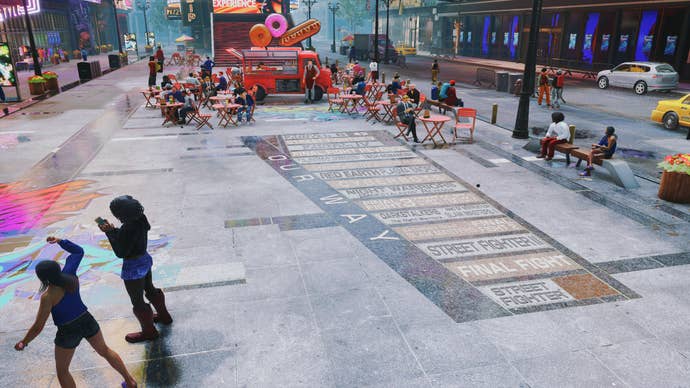
In the middle of Street Fighter 6’s Metro City is a rough facsimile of Times Square known as Beat Square. In the middle of Beat Square, prominent, is a floor mural that’s like the Hollywood Walk of Fame - but for Street Fighter’s lineage. Emblazoned alongside bold script that reads ‘OUR WAY’, it lists, in order:
- Street Fighter
- Final Fight
- Street Fighter 2
- Saturday Night Slam Masters
- Final Fight 2
- Darkstalkers: The Night Warriors
- Ring of Destruction: Slam Masters 2
- Final Fight 3
- Street Fighter Alpha
- Night Warriors: Darkstalkers’ Revenge
- Cyberbots
- Red Earth
- Plasma Sword
- Pocket Fighter
- Rival Schools
- Street Fighter 3
- Vampire Savior: The Lord of Vampire
- Plasma Sword: Nightmare of Bilstein
- Tech Romancer
- Final Fight Revenge
- Street Fighter 4
- Street Fighter 5
- Street Fighter 6
It’s a statement. This is Capcom’s way. This is Capcom’s lineage. World Tour respects and adores it all. And for any fan, new or old, it’s a joyous celebration, history lesson, and experience. Don’t sleep on World Tour – it’s worth a look.
For more on Street Fighter 6, have a look at what we thought of the game in our Street Fighter 6 review. In addition, check out how the wifi wars surrounding the game have already begun, and how Street Fighter 6 has managed to KO Mortal Kombat in terms of Steam records.
